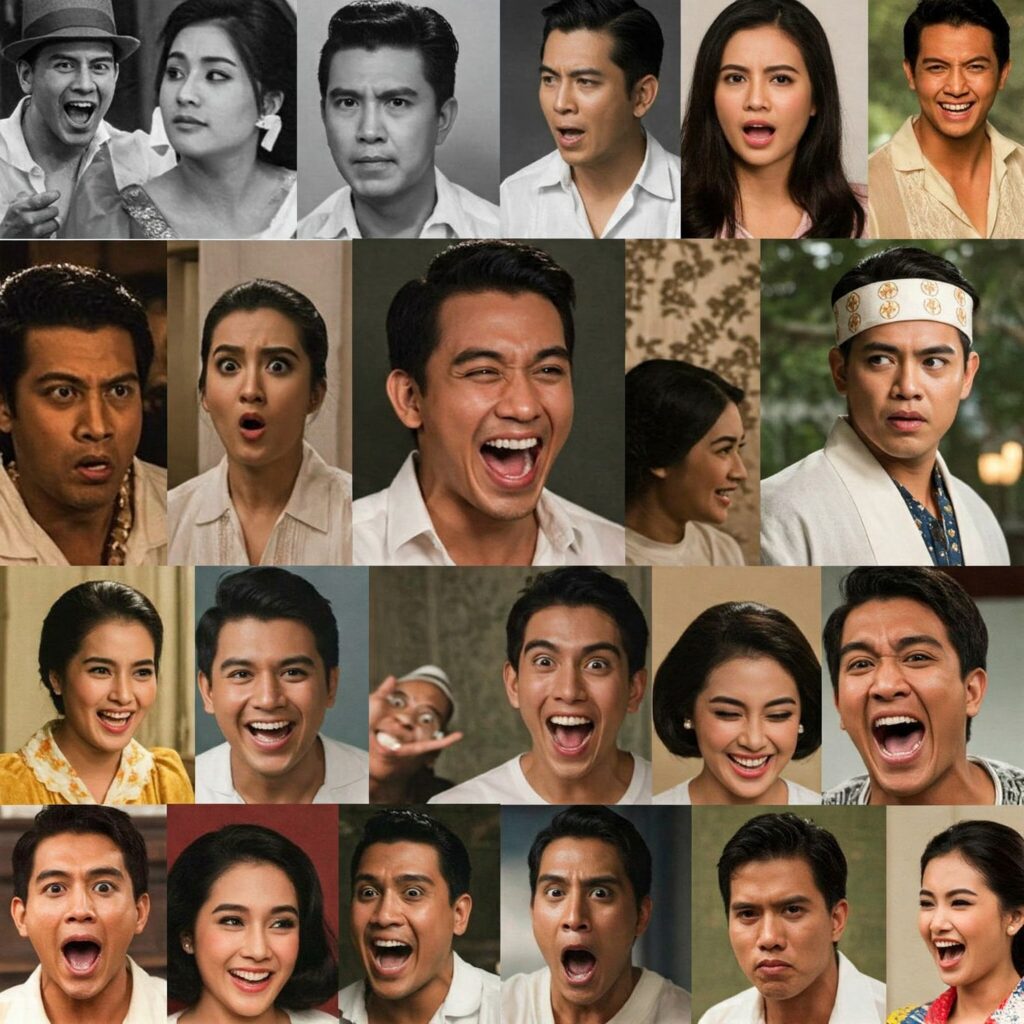Filipino cinema has a long and rich history, dating back to the early 20th century. Over the years, Filipino films have evolved to reflect the changing times and the diverse experiences of the Filipino people. One of the most notable aspects of Filipino cinema is its use of humor. From slapstick comedy to romantic comedy, Filipino films have always found a way to make audiences laugh. In this blog, we will take a look at the evolution of Filipino humor in film and how it has been used to entertain, inform, and inspire audiences.
The Early Years of Filipino Humor in Film
The earliest forms of Filipino humor in film were often slapstick in nature. Slapstick comedy is a type of physical comedy that relies on exaggerated movements and pratfalls to create humor. This type of humor was popular in the early days of silent films, and it quickly caught on in the Philippines. Some of the most popular Filipino slapstick comedians of the early 20th century include Dolphy, Chiquito, and Babalu. These comedians were known for their wacky antics and their ability to make audiences laugh with their physical comedy.
The Rise of Romantic Comedy
In the 1950s and 1960s, romantic comedy began to emerge as a popular genre in Filipino cinema. Romantic comedies are films that tell the story of a love affair in a lighthearted and humorous way. These films often feature witty dialogue, charming characters, and heartwarming endings. Some of the most popular Filipino romantic comedies of this era include “Dalagang Ilocana” (1954), “Maalaala Mo Kaya” (1954), and “Nasaan Ka Irog” (1957). These films helped to establish romantic comedy as a staple genre in Filipino cinema.
The Evolution of Filipino Humor in Film
Over the years, Filipino humor in film has continued to evolve. In the 1970s and 1980s, Filipino films began to tackle more serious social and political issues. However, even in these more serious films, humor was often used to provide a sense of hope and resilience. Some of the most popular Filipino films of this era include “Himala” (1982), “Oro, Plata, Mata” (1982), and “Sister Stella L.” (1984). These films showed that Filipino humor could be used to address serious issues while still entertaining audiences.
In the 1990s and 2000s, Filipino humor in film continued to evolve, with new genres and styles emerging. One of the most notable trends of this era was the rise of independent cinema. Independent films often featured more experimental and unconventional forms of humor. Some of the most popular independent Filipino films of this era include “Ang Pagdadalaga ni Maximo Oliveros” (2005), “Kubrador” (2006), and “Serbis” (2008). These films showed that Filipino humor could be used to tell a wide range of stories and to appeal to a diverse audience.
Filipino Humor in the 21st Century
In the 21st century, Filipino humor in film has continued to thrive. Filipino films are now being screened at international film festivals and are gaining recognition from audiences around the world. Some of the most popular Filipino films of the 21st century include “Kinatay” (2009), “On the Job” (2013), and “Heneral Luna” (2015). These films show that Filipino humor is still relevant and that it can be used to entertain, inform, and inspire audiences.
The Different Types of Filipino Humor in Film
There are many different types of Filipino humor in film. Some of the most common types include:
- Slapstick Comedy: As mentioned earlier, slapstick comedy is a type of physical comedy that relies on exaggerated movements and pratfalls to create humor. This type of humor is still popular in Filipino films today, and it can be seen in films such as “Here Comes the Bride” (2010) and “The Gifted” (2014).
- Romantic Comedy: Romantic comedies are films that tell the story of a love affair in a lighthearted and humorous way. These films often feature witty dialogue, charming characters, and heartwarming endings. Some of the most popular Filipino romantic comedies of recent years include “My Amnesia Girl” (2010), “No Other Woman” (2011), and “It Takes a Man and a Woman” (2013).
- Comedy of Manners: Comedy of manners is a type of humor that satirizes the social customs and conventions of a particular society. This type of humor is often used in Filipino films to poke fun at the Filipino elite and their pretentious ways. Some of the most popular Filipino films that use comedy of manners include “Crying Ladies” (2003) and “The Wedding Dance” (2008).
- Black Comedy: Black comedy is a type of humor that deals with dark or serious subjects in a humorous way. This type of humor can be controversial, but it can also be very effective in making audiences think about important issues. Some of the most popular Filipino films that use black comedy include “Babae sa Septic Tank” (2011) and “Ekstra” (2013).
The Role of Humor in Filipino Culture
Humor plays an important role in Filipino culture. It is often used to cope with difficult situations, to build relationships, and to express oneself. In Filipino films, humor is often used to provide a sense of hope and resilience in the face of adversity. It is also used to celebrate the Filipino spirit and to promote national unity.
The Future of Filipino Humor in Film
The future of Filipino humor in film is bright. Filipino filmmakers are continuing to experiment with new genres and styles, and they are finding new ways to make audiences laugh. With the increasing popularity of Filipino films around the world, it is likely that Filipino humor will continue to evolve and to entertain audiences for many years to come.
Conclusion
Filipino humor in film has a long and rich history. From slapstick comedy to romantic comedy, Filipino films have always found a way to make audiences laugh. Humor plays an important role in Filipino culture, and it is often used to cope with difficult situations, to build relationships, and to express oneself. In Filipino films, humor is often used to provide a sense of hope and resilience in the face of adversity. It is also used to celebrate the Filipino spirit and to promote national unity. The future of Filipino humor in film is bright. Filipino filmmakers are continuing to experiment with new genres and styles, and they are finding new ways to make audiences laugh. With the increasing popularity of Filipino films around the world, it is likely that Filipino humor will continue to evolve and to entertain audiences for many years to come.
Disclaimer: The information provided in this blog is for general informational purposes only and should not be considered1 professional advice. While we strive to ensure the accuracy and completeness of the information, we make no representations or warranties of any kind, express or implied, about2 the completeness, accuracy, reliability, suitability, or availability with respect to the blog or the information, products, services, or related graphics contained on the blog for any purpose.3 Any reliance you place on such information is therefore strictly at your own risk. In no event will4 we be liable for any loss or damage including without limitation, indirect or consequential loss or damage, or any loss or damage whatsoever arising from loss of data or profits arising out of, or in connection with, the use of this5 blog. Please report any inaccuracies so we can correct them promptly.




